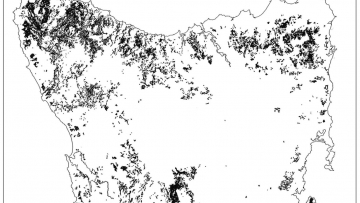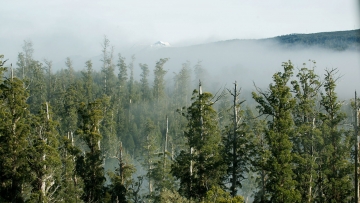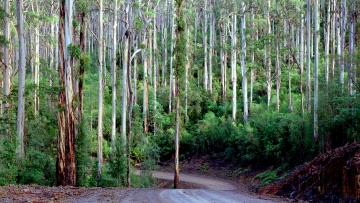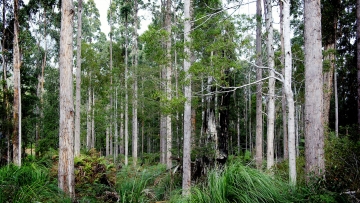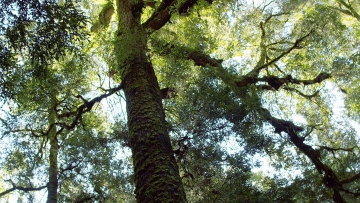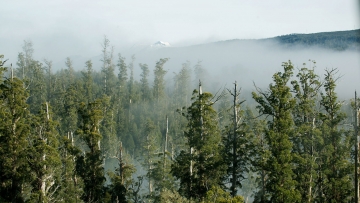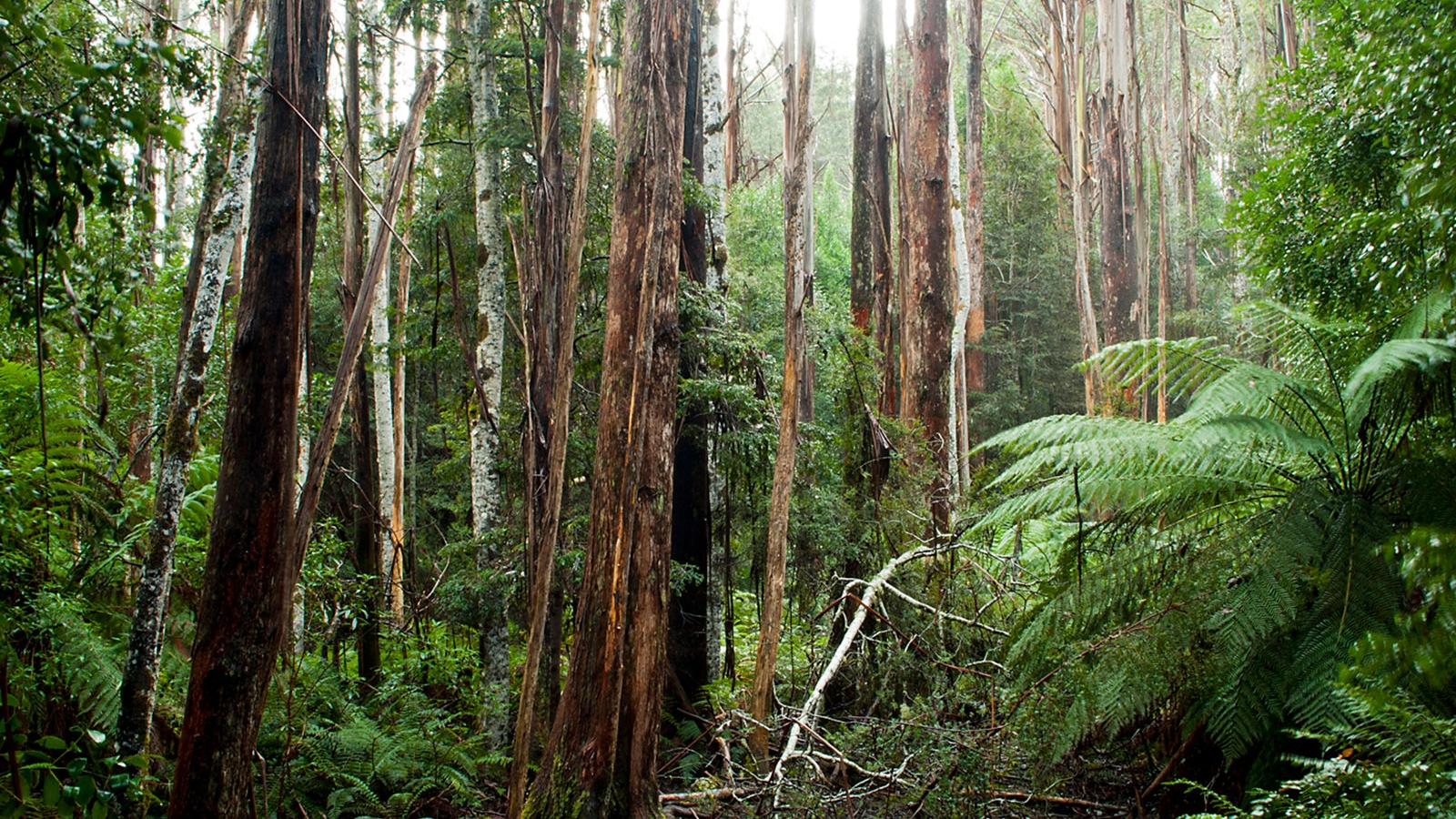
Wet eucalypt forest
The distribution of Tasmania's forests has been influenced by a number of factors such as climate, soils and topography. The western part of the state has the highest rainfall while the eastern half of the state is generally drier and warmer.
The forests tend to reflect this variation in rainfall.
Lowland wet eucalypt forests occur extensively throughout Tasmania (see map below), from sea level to 600 metres above sea level, in areas of moderate to high rainfall and on all but the poorest soils. They constitute about 16% (1,093,400 ha)* of the State’s forested area.
* Based on TASVEG 3.0 (Citation: Department of Primary Industries, Parks, Water and Environment. TASVEG 3.0, Released November 2013. Tasmanian Vegetation Monitoring and Mapping Program, Resource Management and Conservation Division).
Lowland wet eucalypt forests characteristically have dense multi-layered understoreys which can be dominated by rainforest species (called mixed forests), or by a variety of broad-leaved tall shrubs and small trees (called wet sclerophyll forests). The term wet eucalypt forest includes both mixed forest and wet sclerophyll forest.
In wood production terms they are amongst the most productive eucalypt forests in Australia.
Silvicultural Considerations:
- Lowland wet eucalypt forests generally comprise one or more age classes of overstorey eucalypts each of which have established following a past disturbance, usually wildfire. The forests are tall, commonly being more than 40 m high and sometimes reaching 90 m. They have a dense understorey and there is usually no advance growth present.
- Harvesting of the overstorey eucalypts and disturbance of the dense understorey results in heavy slash loads which must be removed by fire or by mechanical means before eucalypt regeneration can establish. Eucalypt seedlings establish more prolifically and grow faster on burnt seedbed than on disturbed but unburnt seedbed. Mechanical disturbance can cause compaction of the surface soil.
- Successful regeneration requires receptive seedbed, an adequate supply of high quality seed, high light levels, reduced levels of overstorey competition and freedom from heavy frosts, drought and excessive damage by insects and browsing animals.
- Safety considerations often preclude the use of partial harvesting systems in these forests. The size of the trees alone limits the opportunity for safe directional felling amongst retained trees.
- The high light requirements of young eucalypt seedlings for establishment and early growth, and the need to successfully burn harvesting debris, means that the minimum opening size is equivalent to about two tree heights. For example, in a 40m tall forest, openings need to be at least 80m wide.
- Clearfelling, followed by an intense regeneration burn and aerial sowing, is currently the most commonly prescribed system for harvesting lowland wet eucalypt forest. This technique meets all the major silvicultural considerations; the heavy fuel load is removed, a receptive seed bed is prepared and the ashbed effect maximised, the amount of sunlight reaching the seedbed is maximised, soil damage is minimised and the future crop can be consistently and successfully established.
- Aggregated retention is the most appropriate system for harvesting coupes that contain a significant proportion of oldgrowth forest (greater than 25% by area), and where the priority is on retaining greater structural and biological diversity into the regenerating stand.
- Aggregated retention is one form of variable retention, the other being dispersed retention. In variable retention systems, forest influence (i.e. the harvested area is able to be self -sown from retained trees) must be retained over the majority of the harvested area. This measure is also used to distinguish variable retention systems from clearfelling. Typically in clearfells the majority of the harvested area is not under forest influence and therefore needs to be artificially sown with seed collected from harvested trees.
- In wet eucalypt forests rich in special timbers, where the priority is successful regeneration of the special species timbers (myrtle, blackwood, leatherwood, celery-top pine and/or sassafras), group selection may be the most appropriate system.
More detailed information can be found in Lowland Wet Eucalypt Forests (PDF) part of our Science and Technical papers list in Publications.
